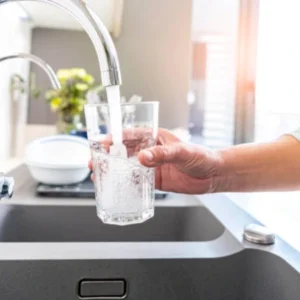In today’s environmentally conscious world, businesses are under increasing pressure to reduce their carbon footprints. One of the most effective ways to move towards sustainability is by incorporating eco-friendly practices into office infrastructure—starting with electrical installations. Sustainable electrical systems not only lower environmental impact but also help reduce operational costs, making them a win-win for both the planet and your business.
The Importance of Sustainable Electrical Installations
Electrical systems are the backbone of modern workplaces, powering everything from lighting and HVAC systems to computers and manufacturing equipment. However, traditional installations often rely on inefficient designs, outdated equipment, and energy-intensive practices. These inefficiencies contribute significantly to greenhouse gas emissions and resource depletion.
By opting for sustainable electrical installations, companies can:
Reduce energy consumption
Minimize waste
Lower utility bills
Improve workplace efficiency
Enhance their brand image as environmentally responsible
Key Components of Sustainable Electrical Installations
Implementing sustainable electrical systems involves more than just switching to LED bulbs. It requires a holistic approach that considers design, technology, and behaviour.
1. Energy-Efficient Lighting Systems
Lighting accounts for a substantial portion of electricity use in offices. Upgrading to energy-efficient lighting—such as LED fixtures with smart controls—can significantly reduce power consumption. Motion sensors, daylight sensors, and dimmer switches help ensure lights are used only when necessary, avoiding unnecessary energy usage.
Tip: Consider task lighting over ambient lighting to illuminate specific areas instead of the entire workspace.
2. Smart Energy Management Systems
Installing intelligent energy management systems allows you to monitor and control energy usage in real time. These systems provide insights into energy consumption patterns, helping identify inefficiencies and areas for improvement. With automation, you can schedule operations like heating, cooling, and lighting to align with occupancy and working hours.
Example: A smart thermostat can adjust heating and cooling based on room occupancy, reducing energy waste without compromising comfort.
3. Renewable Energy Integration
Incorporating renewable energy sources such as solar panels into your electrical infrastructure can dramatically reduce your dependence on fossil fuels. Solar energy systems can be used to power lighting, HVAC systems, and office equipment. While the initial investment may be higher, the long-term savings and environmental benefits make it a worthwhile upgrade.
Bonus: Many governments offer tax incentives and grants for installing renewable energy systems.
4. Efficient HVAC and Electrical Appliances
Heating, ventilation, and air conditioning (HVAC) systems are major energy consumers in workplaces. Installing energy-efficient units, combined with programmable thermostats and zoning controls, can make a substantial difference.
Similarly, choosing energy-efficient appliances—such as computers, printers, and kitchen equipment with Energy Star ratings—can reduce the overall electrical load of your office.
5. Sustainable Wiring and Materials
Eco-friendly workplaces also consider the materials used in electrical installations. Low-impact materials such as halogen-free cables, recyclable conduits, and non-toxic insulation help minimise the environmental footprint. Using locally sourced and durable materials reduces the carbon impact of transportation and maintenance.
6. Backup and Battery Storage Solutions
Implementing sustainable backup systems such as lithium-ion battery storage can further improve energy efficiency. These systems store excess energy generated from renewable sources and provide power during outages or peak demand times, reducing reliance on non-renewable sources.
Designing for Flexibility and Future-Proofing
Sustainable electrical installations should be designed with future growth in mind. Modular systems allow easy expansion without the need for major rework or wasteful replacements. Planning for scalability ensures your workplace can adapt to new technologies, increasing long-term efficiency.
In addition, regular audits and upgrades are essential to keep systems running efficiently. Technology evolves quickly, and keeping up with advancements ensures your workplace remains eco-friendly and cost-effective.
Encouraging Sustainable Behaviour
While efficient systems are vital, employee behaviour also plays a crucial role in maintaining an eco-friendly office. Encourage staff to:
Turn off equipment when not in use
Unplug chargers and devices to avoid “phantom” energy drain
Use natural light when available
Participate in sustainability training
Creating a green culture within the workplace fosters collective responsibility and strengthens your sustainability efforts.
Partnering with the Right Professionals
To ensure a successful transition to sustainable electrical installations, it’s essential to work with experienced electrical contractors who understand green building principles and current regulations. A qualified professional can:
Assess your current system
Recommend suitable upgrades
Ensure compliance with environmental and safety standards
Integrate energy-efficient technologies seamlessly
Choose a contractor who offers tailored solutions and can provide ongoing support to keep your systems running at peak efficiency.
Conclusion
Sustainable electrical installations are a cornerstone of eco-friendly workplaces. By integrating energy-efficient technologies, using green materials, and promoting responsible usage, businesses can significantly lower their environmental impact while also saving on costs. As sustainability becomes a key priority for modern organizations, contact and upgrading your electrical infrastructure is not just a smart move—it’s an essential one. Taking steps today ensures your workplace is ready for a greener, more efficient tomorrow.





